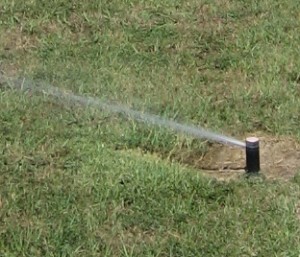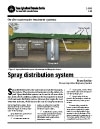 Spray distribution systems for onsite wastewater treatment are much like a lawn sprinkler system. They spray treated wastewater over the surface of a yard. Unlike a subsurface dispersal system, a spray distribution system requires the greatest level of wastewater pretreatment because of the risk of human contact. This in turn increases the cost of the advanced pretreatment system, because it must produce a high quality effluent and includes a disinfection component. Spray systems may incorporate an element of landscape irrigation.
Spray distribution systems for onsite wastewater treatment are much like a lawn sprinkler system. They spray treated wastewater over the surface of a yard. Unlike a subsurface dispersal system, a spray distribution system requires the greatest level of wastewater pretreatment because of the risk of human contact. This in turn increases the cost of the advanced pretreatment system, because it must produce a high quality effluent and includes a disinfection component. Spray systems may incorporate an element of landscape irrigation.
The spray distribution field carries the effluent from the pump tank to the distribution heads.
The spray distribution field has five components:
• Supply line/main line, which carries effluent from the pump discharge assembly to the manifold. In systems with multiple zones, a switching valve is placed at the end of the main supply line and diverts flow to multiple submains.
• Manifold, which carries effluent from the main supply line or submain to laterals.
• Laterals, which are connected to the manifold and convey a component of the flow to distribution heads.
• Risers, which connect the lateral to the distribution heads.
• Distribution heads, which connect to the riser and distribute effluent over the ground surface.
Related Resources:
 Operation and Maintenance Checklist: Spray Distribution
Operation and Maintenance Checklist: Spray Distribution
 Spray Distribution (and in Spanish)
Spray Distribution (and in Spanish)
 Spray Distribution Systems (and in Spanish)
Spray Distribution Systems (and in Spanish)